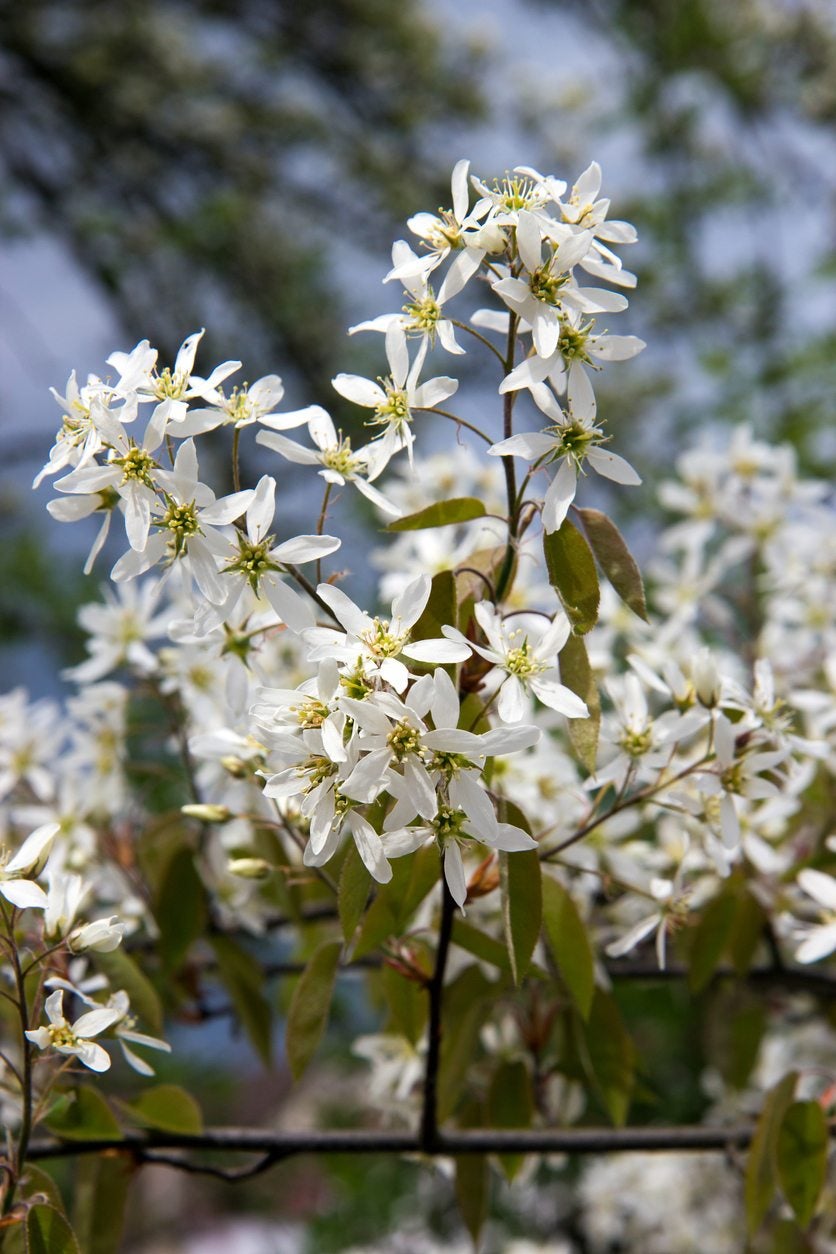Zone 5 Flowering Trees – Tips On Growing Flowering Trees In Zone 5


Every spring, thousands of people from all over the country flock to Washington D.C. for the National Cherry Blossom Festival. In 1912, Tokyo Mayor Yukio Ozaki gifted these Japanese cherry trees as a symbol of friendship between Japan and the U.S., and this annual festival honors that gift and friendship. Those of us who do not live in D.C. do not have to travel hundreds of miles and fight crowds of tourists to enjoy beautiful flowering trees like this. While unique, exotic flowering trees were once hard to get, today most of us have the leisure of just going to a local garden center and selecting from many ornamental trees. Even in cooler climates, like zone 5, there are many choices of flowering trees. Continue reading to learn about flowering trees for zone 5.
Popular Zone 5 Flowering Trees
There are several varieties of ornamental cherry and plum trees that are hardy in zone 5. Popular varieties include:
- Newport plum (Prunus cerasifera), which displays pink flowers in early spring, followed by purple foliage until fall. Height and spread are 15 to 20 feet (5-6 m.).
- Pink Snow Showers cherry (Prunus ‘Pisnshzam'), a weeping tree which is covered in pink blossoms in spring and reaches a height and spread of 20 to 25 feet (5-8 m.).
- Kwanzan cherry (Prunus serrulata) is one of the cherry varieties in Washington D.C.’s cherry festival. It has deep pink blooms in spring and reaches heights and spreads of 15 to 25 feet (5-8 m.).
- Snow Fountain cherry (Prunus ‘Snofozam') is another weeping variety. It has white flowers in spring and a height and spread of 15 feet (5 m.).
Crabapples are another hugely popular type of flowering trees for zone 5. New varieties of crabapple are more resistant to diseases that commonly affect crabapples. Today you can even get crabapple trees that do not produce any messy fruit. Popular varieties of crabapples for zone 5 are:
- Camelot crabapple (Malus ‘Camzam'), which stays small at 8 to 10 feet (2-3 m.) and produces an abundance of deep pink to white blooms. This is a fruiting crabapple.
- Prairiefire crabapple (Malus ‘Prairiefire'), with deep red-purple blooms and a height and spread of 20 feet (6 m.). This crabapple produces deep red fruit.
- Louisa crabapple (Malus ‘Louisa') is a weeping variety that tops out at 15 feet (5 m.). It has pink blossoms and golden fruit.
- Spring Snow crabapple (Malus ‘Spring Snow') does not bear fruit. It has white flowers and grows up to 30 feet (9 m.) tall and 15 feet (5 m.) wide.
Ornamental pear trees have become very popular zone 5 flowering trees. Ornamental pears do not produce edible pear fruit. They are prized mainly for their snow white spring blooms and excellent fall foliage. Common varieties of ornamental pear trees are:
- Autumn Blaze pear (Pyrus calleryana ‘Autumn Blaze'): height 35 feet (11 m.), spread 20 feet (6 m.).
- Chanticleer pear (Pyrus calleryana ‘Glen's Form'): height 25 to 30 feet (8-9 m.), spread 15 feet (5 m.).
- Redspire pear (Pyrus calleryana ‘Redspire'): height 35 feet (11 m.), spread 20 feet (6 m.).
- Korean Sun pear (Pyrus fauriel): by far my favorite of the ornamental pears, this little tree only grows about 12 to 15 feet (4-5 m.) tall and wide.
My absolute favorite of zone 5 ornamental trees are redbud trees. Redbud varieties for zone 5 are:
- Eastern redbud (Cercis canadensis): this is the common variety of redbud with a height and spread of around 30 feet (9 m.).
- Forest Pansy redbud (Cercis Canadensis ‘Forest Pansy’): this unique redbud has purple foliage throughout the summer. Its flowers are not quite as showy as other redbuds though. Forest Pansy has a height of 30 feet (9 m.) with a 25 foot (8 m.) spread.
- Lavender Twist redbud (Cercis canadensis ‘Covey') is a weeping variety of redbud with a dwarf height and spread of 8 to 10 feet (2-3 m.).
Also very popular in zone 5 are flowering dogwood trees. Flowering dogwoods tolerate full sun to part shade, making them very versatile in the landscape. Like ornamental pears, they have spring flowers and colorful fall foliage. Popular varieties are:
- Pagoda dogwood (Cornus alternifolia): height 20 feet (6 m.), spread 25 feet (8 m.).
- Golden Shadows dogwood (Cornus alternifolia ‘W. Stackman'): has variegated yellow and green foliage. It does best with afternoon shade and stays small at 10 feet (3 m.) tall and wide.
- Kousa Dogwood (Cornus ‘Kousa’) has bright red fruit throughout summer. It reaches a height of 30 feet (9 m.) with a spread of around 20 feet (6 m.).
Some other popular zone 5 ornamental tree varieties are:
Gardening tips, videos, info and more delivered right to your inbox!
Sign up for the Gardening Know How newsletter today and receive a free copy of our e-book "How to Grow Delicious Tomatoes".
- Autumn Brillance serviceberry
- Dwarf Red buckeye
- Chinese Fringe tree
- Japanese Lilac tree
- PeeGee Hydrangea tree
- Walker's Weeping peashrub
- Thornless Cockspur hawthorn
- Russian Olive
- Saucer magnolia
- Showy mountain ash
Growing Flowering Trees in Zone 5
Zone 5 ornamental trees do not require any extra care than any other trees. When first planted, they should be regularly and deeply watered during the first growing season. By the second year, roots should be established well enough to seek out their own water and nutrients. In cases of drought, you should provide all landscape plants with extra water. In spring, flowering trees can benefit from a fertilizer specifically made for flowering trees, with extra phosphorus.